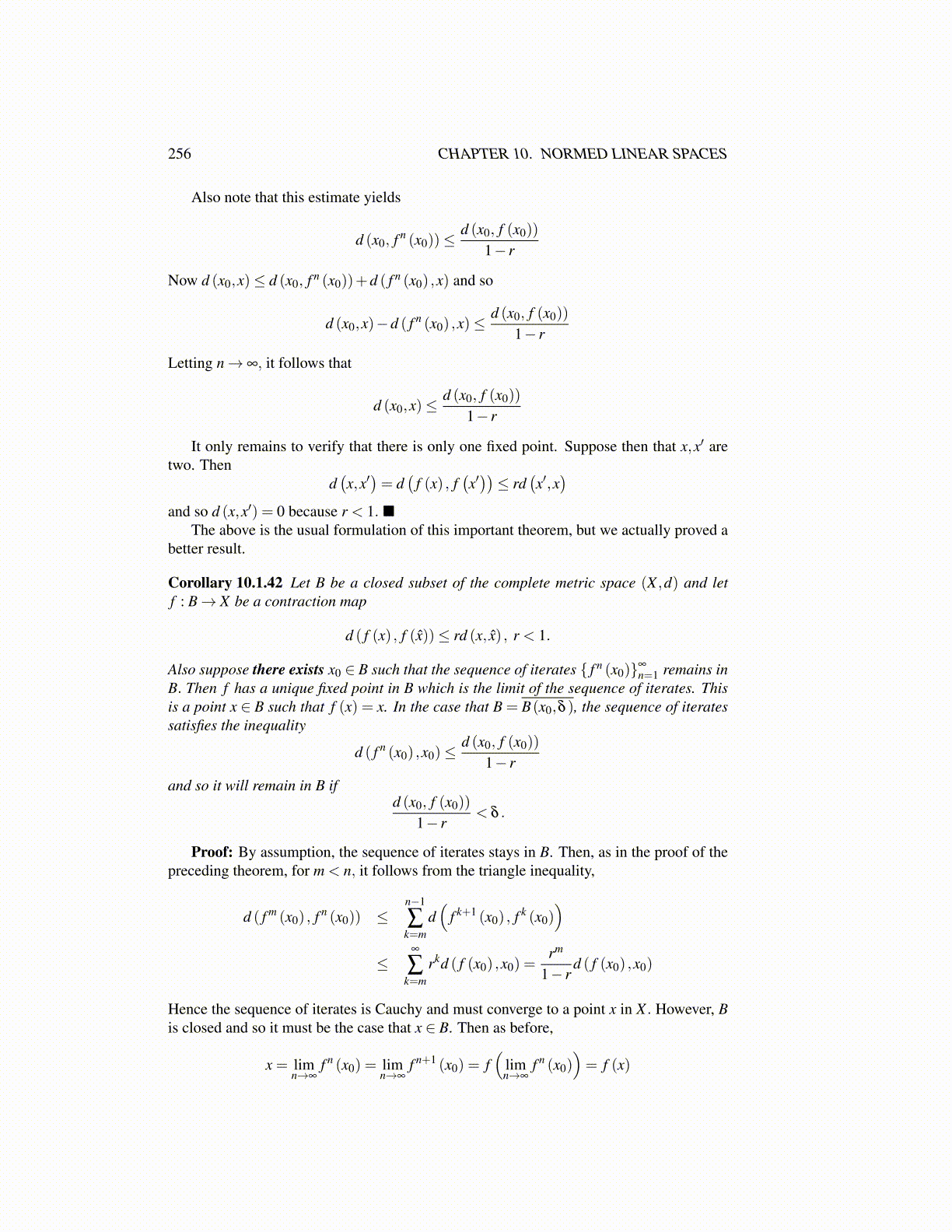
256 CHAPTER 10. NORMED LINEAR SPACES
Also note that this estimate yields
d (x0, f n (x0))≤d (x0, f (x0))
1− r
Now d (x0,x)≤ d (x0, f n (x0))+d ( f n (x0) ,x) and so
d (x0,x)−d ( f n (x0) ,x)≤d (x0, f (x0))
1− r
Letting n→ ∞, it follows that
d (x0,x)≤d (x0, f (x0))
1− r
It only remains to verify that there is only one fixed point. Suppose then that x,x′ aretwo. Then
d(x,x′)= d
(f (x) , f
(x′))≤ rd
(x′,x)
and so d (x,x′) = 0 because r < 1. ■The above is the usual formulation of this important theorem, but we actually proved a
better result.
Corollary 10.1.42 Let B be a closed subset of the complete metric space (X ,d) and letf : B→ X be a contraction map
d ( f (x) , f (x̂))≤ rd (x, x̂) , r < 1.
Also suppose there exists x0 ∈ B such that the sequence of iterates { f n (x0)}∞
n=1 remains inB. Then f has a unique fixed point in B which is the limit of the sequence of iterates. Thisis a point x ∈ B such that f (x) = x. In the case that B = B(x0,δ ), the sequence of iteratessatisfies the inequality
d ( f n (x0) ,x0)≤d (x0, f (x0))
1− rand so it will remain in B if
d (x0, f (x0))
1− r< δ .
Proof: By assumption, the sequence of iterates stays in B. Then, as in the proof of thepreceding theorem, for m < n, it follows from the triangle inequality,
d ( f m (x0) , f n (x0)) ≤n−1
∑k=m
d(
f k+1 (x0) , f k (x0))
≤∞
∑k=m
rkd ( f (x0) ,x0) =rm
1− rd ( f (x0) ,x0)
Hence the sequence of iterates is Cauchy and must converge to a point x in X . However, Bis closed and so it must be the case that x ∈ B. Then as before,
x = limn→∞
f n (x0) = limn→∞
f n+1 (x0) = f(
limn→∞
f n (x0))= f (x)